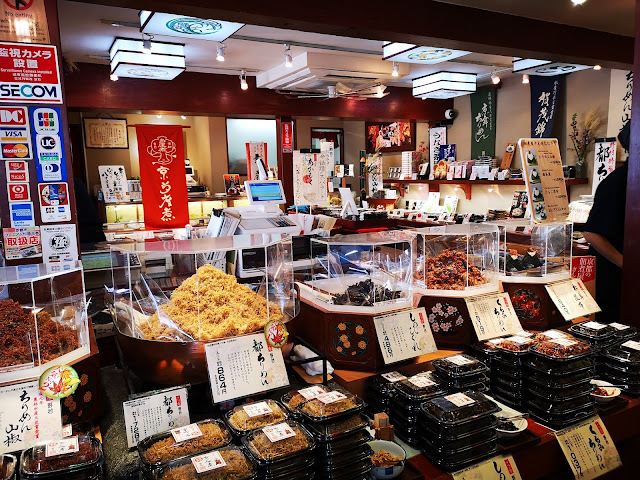In 1990, I watched a film by Akira Kurosawa, called Dreams. It is a magical realist film journeying through dreams. Ever since watching all eight vignettes, I have thought of Japan as a fairy-tale land, and I have longed to visit it.
It took years, but I have finally visited Japan, thanks to Philippines AirAsia, which, last July, launched its direct flights from Manila to Osaka.
And what I witnessed during our short stay is magic that transcends from the past to the present.
In Osaka, neon lights, extravagant signages, and colorful arrays of shops and dining places filled our senses. Osaka is the capital city of Osaka Prefecture and the second-largest metropolitan area in Japan.
There’s the Glico Running Man, an advertising mascot for Glico Candy; the Kani Douraku crab from Japan’s iconic restaurant; and the Ferris Wheel of a popular discount establishment coming soon to Manila, which is Don Quixote. Each one is vying for attention and demanding photo opps, probably not just amongst tourists.
We stayed right in the bright heart of Osaka, at Swissôtel Nankai Osaka, which sits above Nankai Railway’s Namba Station and is a few steps away from Dotonbori, a popular shopping and entertainment district where all of these attractions are located.
It was not just our eyes and ears that brimmed with amusement. My mouth thanked me profusely for its fill of authentic Japanese food. My friend Leona, who is the Philippine Tourism Attache in Osaka, made us try takoyaki–sen,or takoyaki served in a crispy shell. Takoyakis are ball-shaped snacks or appetizer made of a wheat-flour base and filled with minced or diced octopus (tako).
Before venturing out to get our street-food fix, friends from Swissôtel Nankai Osaka warned us not to get too full, as a feast was waiting for us. True enough, we had a grand Teppanyakimeal at their award-winning Minami Restaurant. No less than Chef Shingo Komoto led the two-man display of impeccable cooking skills and mastery in creating edible works of art.
Our multi-course meal included appetizers, prawns, scallops, fish, salad, scorched vegetables, prime wagyu-beef, tenderloin, sirloin, assorted sushi, and fruits. Accompanying our meal was sakethat had edible gold flakes. I was told that it is the premium kind.
Swissôtel Nankai Osaka’s breakfast buffet spread at Tavola36, the hotel's all-day dining restaurant, featured other Japanese dishes like freshly cooked Okonomiyaki (Japanese savory pancakes), Tamagoyaki (Japanese rolled omelet), Shiozake (salted salmon),and what I consider Japan’s best export: Yakult, a probiotic milk.
I actually scoured convenient stores like 7/11 and Ministops to hoard more Yakults. Unfortunately, I couldn’t find any but instead bought several pieces of the first Michelin-starred instant ramen, Tsuta Japanese Soba Noodles.
In Kyoto, we visited Nishiki Market, known as “Kyoto’s Kitchen.” It is a narrow street lined with food shops. This vibrant market has almost everything — seafood, sweets, pickles, dried food, sushi, and even some souvenirs. Whether you are looking at the new or old, Japan overwhelms.
Kyoto isthe capital city of the Kyoto Prefecture in Japan and is considered the cultural capital of Japan.
Those who have seen the movie Memoirs of a Geisha, an epic drama film shot in 2005 and adapted from a book of the same title, will remember a few Kyoto destinations.
The most memorable location is the Fushimi-Inari Taisha, which was the backdrop of the film’s most visually stunning moment. Fushimi-Inari Taisha is an important Shinto (a religion originating from Japan)shrine and is famous for its thousand vermilion toriigates. Toriiis a traditional Japanese gate that symbolizes the transition from the mundane to the sacred.
While the pull of walking through the gates and taking photos was strong, I chose to do the rituals. Bow, clap, wish. I couldn’t remember the sequence. All I know was that the gates directed our prayers to Mt. Inari.
Also, in the movie Memoirs of a Geisha, the main character, Sayuri, lived in Gion, the most-well known geisha district in Japan.
It was surreal walking the streets of Gion. It actually feels like a step back in time. It is home to teahouses, shrines, and temples, but its famous attractions are the gracefully moving geishas (or "geikos," as they're called in the Kyoto dialect), wearing white make-up and colorful kimonos, and maikos, or apprentice geishas.
We explored Gion in the morning, so we didn’t see any. But we had enough cultural immersion in its cobblestones streets while looking at its traditional shops.
Aside from Nishiki Market, Fushimi-Inari Taisha, and Gion, we also went to Kinkakuji, or the Golden Pavilion, a temple covered in gold leaf that was built overlooking a large pond. That was first in our one-day Kyoto itinerary and my first Japanese temple.
There is still much to see, much to explore, and much to appreciate. Those are reserved for future travels. For now, I am thankful for my first Japan experience. Thankful to KKDay, which provided the tours and to Travel Recommends, which provided our WiFi connections. Of course, thank you to Swissôtel Nankai Osaka, which provided our accommodations, and to Philippines AirAsia, which allowed us to once again chase international wonders.
AirAsia flies daily to Osaka, its 13thinternational destination. For schedules and other details, visit www.airasia.com




























0 comments